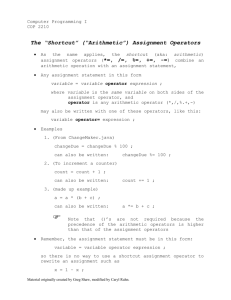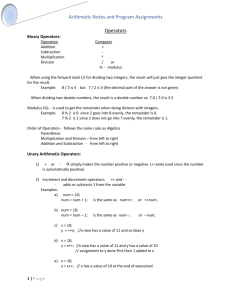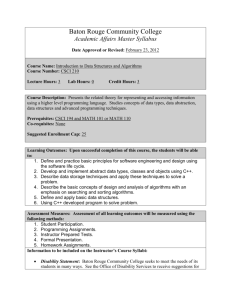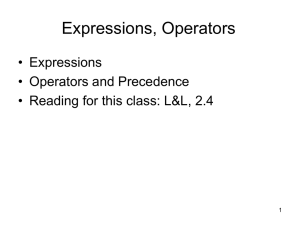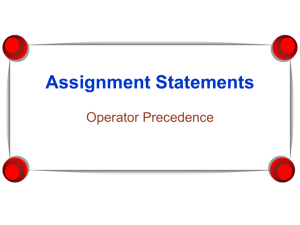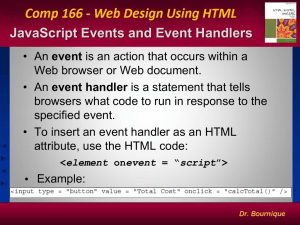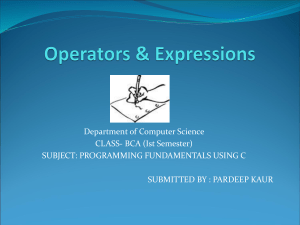ppt
advertisement
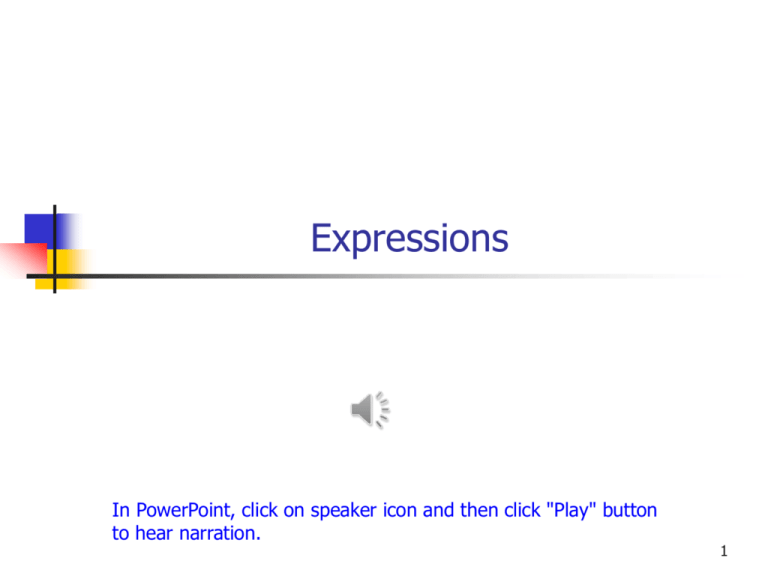
Expressions In PowerPoint, click on speaker icon and then click "Play" button to hear narration. 1 Expressions An expression is a combination of one or more operators and operands. Arithmetic expressions compute numeric results using the arithmetic operators: Addition Subtraction Multiplication Division Remainder + * / % 2 Division and Remainder If both operands to the division operator (/) are integers, the result is an integer The fractional part is discarded. Integer division results in truncation, not rounding. 14 / 3 equals 8 / 12 equals 4 0 The remainder operator (%) returns the remainder from dividing the first operand by the second. 14 % 3 8 % 12 equals equals 2 8 3 Operator Precedence Operators can be combined into complex expressions result = total + count / max - offset; The order in which the operations are done is important. Multiplication, division, and remainder are evaluated prior to addition, subtraction, and string concatenation. Arithmetic operators with the same precedence are evaluated from left to right, but parentheses can be used to force the evaluation order. 4 Operator Precedence What is the order of evaluation in the following expressions? a / (b + c) - d % e 2 1 4 3 a / (b * (c + (d - e))) 4 3 2 1 In PowerPoint, click on the slide to show sucessive results. 5 Exercises Given the declarations below, find the result of each expression (in a Java program). int a = 3, b = 10, c = 7; a / b b / a b % a Answers on next slides. 6 Program to answer exercise 7 Exercise Answers 8 Assignment Revisited The assignment operator has a lower precedence than the arithmetic operators First the expression on the right hand side of the = operator is evaluated answer = 4 sum / 4 + MAX * lowest; 1 3 2 Then the result is stored in the variable on the left hand side In PowerPoint, click on the slide to show sucessive results. 9 Exercise Given two integer variables matriculationAge and graduationAge , write a statement that gives graduationAge a value that is 4 more than the value of matriculationAge . 10 Program to answer exercise 11 Program to answer exercise running 12 Assignment Operators Often we perform an operation on a variable, and then store the result back into that variable. Java provides assignment operators to simplify that process For example, the statement num += count; is equivalent to num = num + count; 13 Assignment Operators There are many assignment operators in Java, including the following: Operator += -= *= /= %= Example x x x x x += -= *= /= %= y y y y y Equivalent To x x x x x = = = = = x x x x x + * / % y y y y y 14 Assignment Operators The right hand side of an assignment operator can be a complex expression For example, result /= (total-MIN) % num; is equivalent to result = result / ((total-MIN) % num); 15
